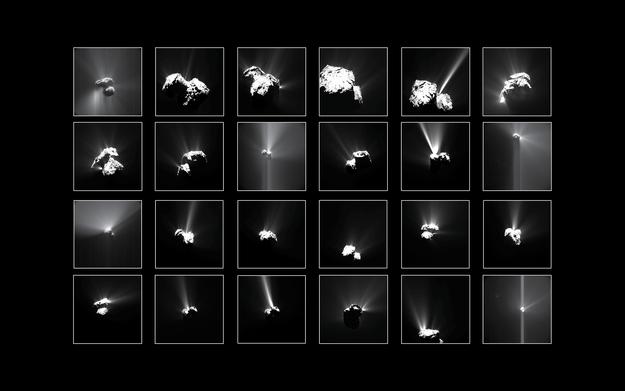Scientists released the last photograph taken from the Rosetta spacecraft before it crashed into a comet 300 million miles away.
The image provides the closest view of a comet humanity has ever witnessed. The spacecraft snapped the last photo when it was just 60 feet from the comet, according to the European Space Agency.





